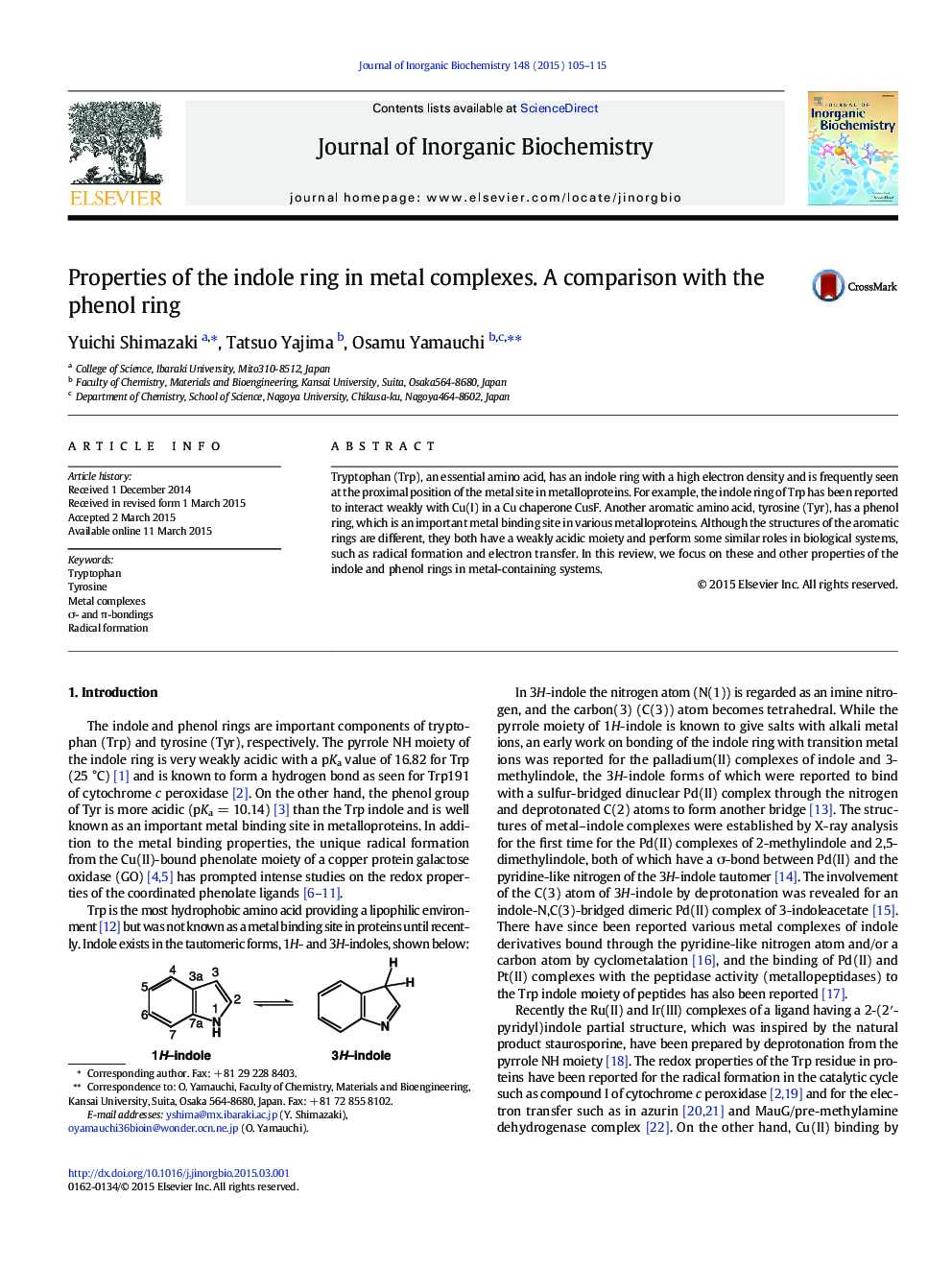| Article ID | Journal | Published Year | Pages | File Type |
|---|---|---|---|---|
| 1316075 | Journal of Inorganic Biochemistry | 2015 | 11 Pages |
•Recent studies on the metal complexes having indole and/or phenol rings have been reviewed.•Pendent indole and phenol rings show weak interactions with metal ions and/or coordinated ligands.•Indole and phenol rings can bind to metal ions by π- and/or σ-bonds and may form radicals.•The dissociable proton of Trp pyrrole NH and Tyr phenol OH is important in biological systems.
Tryptophan (Trp), an essential amino acid, has an indole ring with a high electron density and is frequently seen at the proximal position of the metal site in metalloproteins. For example, the indole ring of Trp has been reported to interact weakly with Cu(I) in a Cu chaperone CusF. Another aromatic amino acid, tyrosine (Tyr), has a phenol ring, which is an important metal binding site in various metalloproteins. Although the structures of the aromatic rings are different, they both have a weakly acidic moiety and perform some similar roles in biological systems, such as radical formation and electron transfer. In this review, we focus on these and other properties of the indole and phenol rings in metal-containing systems.
Graphical abstractThe indole and phenol rings of tryptophan and tyrosine, respectively, exhibit various functions in biological systems. They are involved in metal binding, molecular recognition by weak interactions, enzyme catalysis, and formation of the molecular environment. In this review, properties of these rings in metal containing systems were reviewed and discussed.Figure optionsDownload full-size imageDownload as PowerPoint slide
